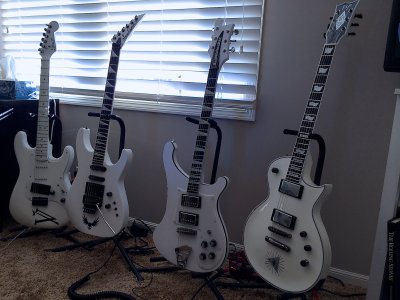Great Ape said:I think you should leave it alone...you stand a good chance of truly messing up that guitar. It sounds a bit like you're itchin' to finish a guitar, so what about buying a Warmoth alder or poplar body and doin' a job on it? You'd gain some valuable knowledge and experience, and possibly a cool new guitar...then, if you've still got your heart set on it, you can go ahead and ruin--I mean refin(! :icon_jokercolor:!) the Ric...
Actually, I have little desire to do this work myself, although I've done my share of industrial painting. I just haven't been able to find someone to do it for me. And I'd love to build one and finish it myself, but this Rickenbacker 481 "thing" is a specific obsession going back to the mid-1970s when I was getting started on guitar. Part of the lasting attraction, besides it being just a damn fine looking and playing guitar, is the fact that it isn't Fender, Gibson, or even typical Rickenbacker-like. And I entertained building a modern "knock-off" out of Warmoth parts, until I was warned about how litigious Rickenbacker is about such things! While I'm not swayed against getting the pee color back to white somehow, I am leaning toward having a real expert do it. Thanks for your advise and input.




